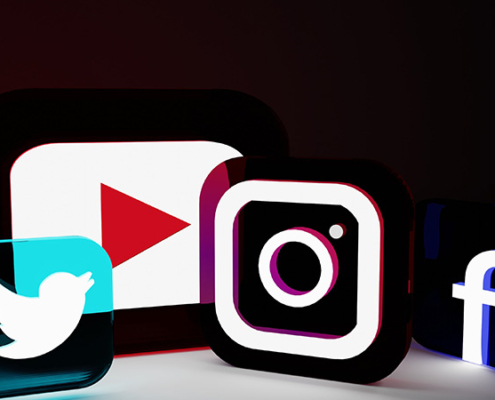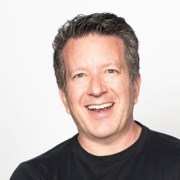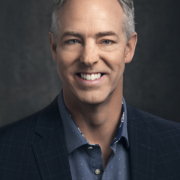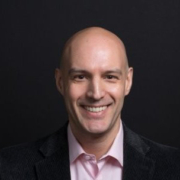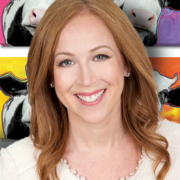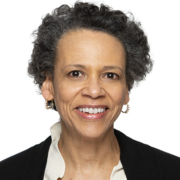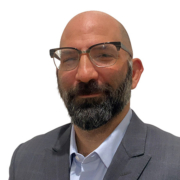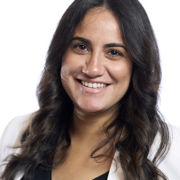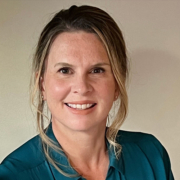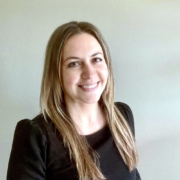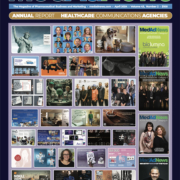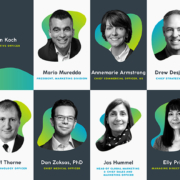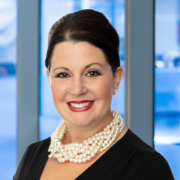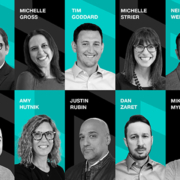Healthcare Agency Roundtable 2023: Cutting through the social noise
Healthcare Agency Roundtable 2023: Cutting through the social noise
By Maria Fontanazza • [email protected]
How has social media transformed messaging and engagement with patients and HCPs? How has influencer marketing changed/shaped strategies and possibilities in reaching target audiences?
Steve Bernstein, Partner, CrowdPharm: The way consumers value information today is dramatically changing. The mention from an unknown consumer can be more valued than information from the company itself. Because of this, influencer marketing must be considered with every consumer campaign.
Drew Desjardins, Chief Strategy Officer, Marketing, Avalere Health: Social media has had a significant impact on engagement with patients and HCPs on several levels. Through social listening, we can determine the emotional perception of a customer base around a disease state or treatment options. It allows us to obtain insight into audience demographics, compare content that users are generating, assess competitive share of voice, and identify topics that are trending. By
understanding what is happening organically and how people are thinking, we can tailor messaging and engagement strategies to provide content that is more likely to influence behaviors that lead to better outcomes. In the rare disease space, social media allows us to touch these difficult-to-reach audiences and foster two-way conversations in unprecedented ways. For rare-disease patients, community is paramount, and knowledge sharing is one of the core functions of these platforms. The value rare-disease patients and caregivers get out of participating in these spaces cannot be understated. HCPs similarly use social media — both traditional and professional — to amplify their voices, developing distinction in their specialties while also keeping a pulse on the patients they treat. These unique dynamics create opportunities for brands to connect to the community by joining conversations in authentic and relevant ways. Many online communities offer an environment where healthcare professionals, patients, and caregivers freely exchange information, which creates a wealth of data just waiting to be mined. Analyzing these conversations through social listening can provide brands with valuable insights to guide impactful content strategies. Today, it is essential that brands identify and map key opinion leaders and digital opinion leaders, build relationships, provide education, and explore partnerships. When managed properly with thoughtful strategy and diligent planning, these social platforms can yield significant dividends.
Gary Lyons, Head of Commercial Excellence and Strategy, Medical, Avalere Health: In medical engagements, social media has played a critical role in supporting the dissemination of scientific information and data to wider and more diverse audiences, increasing the connectivity and impact of core medical affairs activities such as congresses, publication outputs, and digital platforms. Social media has also been beneficial in facilitating scientific exchange and dialogue with key opinion leaders, digital opinion leaders, and other stakeholders, nurturing collaboration and encouraging onward discussion of key science and data. Social media has also been used to enhance the awareness, reputation, and credibility of medical affairs as a trusted source of scientific information and education — building relationships and trust with patients and HCPs.
Influencer marketing plays a significant role in influencing brands, products, and campaigns. We are able to identify key influencers that create new opportunities to engage with audiences who trust the opinions and perspectives of those individuals. They can be leveraged to inform followers about the brand, product, and message planning, and give real-time and front-line input into the end-customer needs. In medical affairs, influencer marketing is utilized by leading stakeholders to drive communication and education of science, treatment advances, and core data to target audiences. Some innovative approaches being applied in influencer marketing include increasing engagement, content adoption, and sharing by enabling science, data, and medical education to reach more potential stakeholders than before; overcoming the challenges of direct medical communication by partnering with disease state influencers who have established credibility and authority in their fields, enabling pharma companies to further reach into their existing networks and communities by delivering relevant and authentic messages that resonate with their peers and audiences; providing medical affairs teams with valuable insights and feedback, facilitating the understanding of needs, preferences, and pain points of their target audiences to tailor their medical communications around specific science and data; and acting as consultants, collaborators, or strategic co-creators, providing input and suggestions on how to improve the quality and effectiveness of scientific communication and engagement approaches to target audiences.
Jay Patel, Executive VP of Experience Strategy, Saatchi & Saatchi Wellness: The transformation from only using traditional KOL’s to activating a middle tier of KOIs (key opinion influencers) is changing who we talk to and how information moves from peer-to-peer and from patient to HCP. Everyone I know follows at least on doctor on TikTok or Instagram. Information sharing has become fragmented but also highly specialized, creating more opportunities to reach niche audiences and work with a broader segment of “influencers”.
Angela Tenuta, President, EVERSANA INTOUCH: This connects to a brand’s approach to omnichannel. With so many different channels and platforms in the market today, it’s more important than ever for brands to know who their core audience is, what topics people care most about, and how to leverage influencers. Influencers don’t need to be a celebrity or major investment. They could be as simple as the go-to expert on this condition who has built trust over many years. Understanding who these key opinion leaders (KOLs) are, how to reach them and stay engaged with them and more is so vital.
Charlotte Turner, VP, Social Media, Ogilvy Health: Social media has opened up many new avenues for conversation and education. Engaging patient communities and reaching healthcare professionals through these channels has encouraged companies to rethink their approaches and distil their messages to their most impactful. On these platforms, where people are choosing to spend their time, there always needs to be a clear value exchange. When you’re making a demand on your audience’s time and attention – you need to think: what is in it for them? Breaking this down, first you have to consider what will make them stop scrolling – you will be sandwiched between other attention-grabbing content. Then, how do you keep their attention long enough to deliver what can be quite complex and serious messages? Finally, how do you ensure that the key takeaway is simple and specific enough to create impact? Working within these parameters presents a great opportunity for creativity that continues to evolve as the platforms grow and change.
D’Anthony Jackson, VP, Social Media, Ogilvy Health: Influencer marketing has given brands the opportunity to be more personable, allowing them to tap into and discover niche communities and engage with target audiences in more authentic ways that sometimes could be challenging via traditional advertising. When activated the right way, it has allowed brands to create more personalized, tailored, and relatable content strategies that opens the opportunity to build credibility, trust, and connection with consumers.
Brad Einarsen, Senior Vice President, Social Media Strategy, Klick Health: Over the past 15 years, social media has transformed how we communicate globally. It has brought the entire world closer in ways that are sometimes wonderful and unfortunately other times terrible. It has also fundamentally changed the way people communicate with brands. Brands no longer feel out of reach. They are now peers with which people can communicate on a nearly daily basis. The go-to reaction now for someone experiencing an issue with a brand’s customer support isn’t the escalation path, it’s Twitter (which 39 percent of people now call
X), Instagram, or TikTok. Most major brands are leaning into this change and building their “share of emotion.” Healthcare is not immune to this change, and many, if not most, corporate and product brands have created properties on these platforms. Patients have always had a deep affinity for the brands that help them overcome obstacles, make them feel better, and free them to engage with the world. These brands have more to gain by building relationships with their audiences — both patients and HCPs — than most others. Yet, only 25 percent (110 of 440 known active Rx-branded Facebook Pages) have comments turned on. Even fewer have robust community management strategies, and they are not reaping the rewards like the brands that are fully embracing social. HCPs, too, are on social media — mostly for personal use — at or above rates seen in the general population. Professional usage of Facebook or LinkedIn is approaching 50 percent (DHC, EPG Health) and both professional and public social networks are exposure sources. These new LinkedIn opportunities and ubiquitous Facebook demographics provide fertile ground for brands that want to reach HCPs on social media. However, when using these platforms, marketers should be mindful that HCPs care more about the clinical data than emotional appeals and need to be communicated with differently.
Mirelle Paris, Vice President, Group Director, Social Media Strategy, Klick Health: Influencer marketing has emerged as a transformative force in health care, reshaping digital strategies and redefining the way brands connect with their target audiences. Creators in the healthcare space — often patients, medical professionals, or individuals with specific health expertise — have gained prominence as trusted voices. Their authentic and relatable narratives resonate with audiences seeking credible information and support. We’re seeing the trust and authenticity that influencers bring with their audiences far surpasses those built with traditional marketing tactics. Patients, and even HCPs, place much more faith in the opinions of people they trust than that of a brand itself. Influencer marketing enables precise targeting, reaching specific patient populations and niche healthcare segments effectively. Moreover, it can foster patient empowerment by offering educational resources, driving awareness, and encouraging specific health related behaviors. This approach has demonstrated its efficacy in addressing stigmatized health topics, enhancing health/condition-based literacy, and encouraging patient-provider discussions. However, it also comes with ethical considerations, such as transparency and the responsible dissemination of medical information. In the healthcare industry, influencer marketing has opened up new dimensions of engagement and communication, creating opportunities for more patient-centric, educational, and relatable approaches to reach and support target audiences. In an era of heightened consumer skepticism, influencer marketing offers a valuable channel to establish trust and foster brand loyalty, while allowing for precise and measurable impact assessments, making it a pivotal element in modern marketing/digital strategies. When it comes down to it, patients tend to trust a fellow patient’s opinion more than what a brand has to say.
Helen Hoye, Associate Director, Social Media Strategy, AbelsonTaylor Group: As more pharma marketers began to understand the power of social media, some social channels became oversaturated with pharma ads. This is why marketing leaders started seeking alternative ways, like influencer communications, to cut through the noise and reach their audiences. Being “social first” is a key consideration in many of AbelsonTaylor Group campaigns: defining the persona for a brand in each platform and engaging with audiences in appropriate ways. Through active and consistent social listening, we gain insights into our audiences’ needs. Where message crafting and testing required primary market research, social listening provides real language and emotional context. Social media is transforming messaging into rich evolving conversations between brands and their customers. LinkedIn recently rolled out a new capability that allows pharma companies to run branded ads, and we observed a quick reaction from pharma marketers looking for a new opportunity to reach their HCP audiences. AbelsonTaylor Group’s engagement strategy team has always seen great potential in LinkedIn, especially its ability to target HCPs by title and specialty. And we were excited to see this becoming available for pharmaceutical companies’ branded efforts. Today, the platform is being added to many of our tactical recommendations for brands that have HCP campaigns.
Influencer marketing is a bridge to audiences unsure about a brand and a way to increase audience reach via the influencers’ followers. This communication channel is gaining more and more weight in various industries, including healthcare and wellness. Doctors and patients with an engaging presence on social media, along with their substantial base of followers, can help a brand tell a different, more personal side of its story, making it an excellent channel to include in many strategies. Audiences often find influencers more authentic and feel they provide the personal connection they want or need to determine if a brand or product fits into their lives and routines. At AbelsonTaylor Group, we are including influencer marketing in our ecosystems and media plans as appropriate. Influencers’ followers may or may not be on our target audience lists, but they can be a strategic and effective way to reach more potential patients.
David Cherry, executive VP, Managing Partner, Customer Experience, Biolumina: Social media seems to be at an inflection point. For years, the ability to target individuals across multiple dimensions (from interest to identity to social graph) has made social media a compelling platform to reach the right audiences (both patient and HCP) and a key placement for omnichannel marketing. Social proof and shared experience are critical components that any audience considers when evaluating a product, and social media has historically been helpful to brands in that regard. However, many of the large consumer platforms recently seem to have prioritized their own business goals over both consumers’ and advertisers’ user experience, resulting in a recent dramatic loss of trust and engagement on many platforms, particularly on X (formerly Twitter). Polarizing global events have also contributed. A new crop of platforms launched in 2022–2023 to try to capture this fallout, but we do not yet see any with equivalent scale and targeting. While this plays out, we are recommending our clients shift more of their social media spend to endemic healthcare platforms — professional social properties like Medscape, Sermo, Doximity for HCPs and a variety of condition and society sites for patients.
Jonathan Brady, Group Engagement Director, FCB Health New York, an IPG Health Company: With 4.5 million US TikTok users identifying as HCPs, and their growth on the platform increasing by over 200 percent since 2020, TikTok has emerged as the place where HCPs are uniquely engaging with both patients and peers on social media. Our IPG Health Influencer ID offering attests to this transformation, as it has been most successful in discovering and engaging with HCP influencers on TikTok.
Why the love? Well, the informal vibe and the scalability of content creation allows HCPs to reach a broader audience on topics that resonate, in formats the audience loves and can absorb quickly (like “sound-on” video). Thanks to TikTok’s simple editing tools, it’s easy for HCPs to create content that feels native. More importantly, the interaction between HCPs and their audiences on TikTok just feels different – instead of being a one-way monologue, HCPs for the first time can actually have meaningful ongoing dialogue with a unprecedently large and diverse community.
Stacey Gandler, Managing Director, PR, and Brand Ideation, PRotein, a division of Calcium+Company: The impact of social media and influencer marketing on health communications is undeniable. It’s a fundamental today that when used correctly is immensely powerful in creating long-lasting relationships with brands. The ongoing expansion of channels and platform creates an environment with no limit for people who want to share their personal health journey — and their voice often comes with a sense of personal connection and credibility in storytelling that a brand just cannot reproduce. On the positive side, the wealth of health information and education available through social channels and influencers has directly activated and empowered some people to take a more active role in their health and wellness with the “traditional” healthcare resources in their lives, like a primary care physician, patient advocacy group and hospital, who by the way, also now need to compete for likes and views with this new brand of health specialist – the patient influencer as expert.
For me, the most inspiring effect of social media and influencer marketing has been the ability for people with conditions to connect with other people — using the sharing of experiences, advice and emotional support — to help with self-identification, education, and even how to communication with physicians to better advocate for yourself. This understanding of the patient experience can ground strategies in work that truly supports a community in ways that serve them best. However, it’s important to watch challenges related to misinformation, and for those of us in communications, how do we create programs that harness the voice of the patient, but at the same time navigate the complexities of accuracy and regulatory compliance.
Cassie Stox, VP, Media Strategy and Audience Insights, MedThink SciCom: Social media has always been a channel for advertising reach and frequency. However, the way audiences use social media has evolved, and one substantial change is the use of social media for search, information seeking, and discovery. This shift in audience mindset has added another layer to messaging and goal considerations for social media engagements. While building brand awareness and providing access to savings programs via social media is still valid, there is also an opportunity to leverage a brand’s social presence to answer queries, provide information on managing conditions, offer patient or HCP perspectives on how the product works, or explain the science behind the molecule. Tapping into insights gained from social listening (monitoring conversations between patients, caregivers, and HCPs) can also inform social strategies and messaging content. Partnering with expert patients and patient advocates can help brands create a deeper connection with their target audience. Including these influencers in the strategy development process can enrich insights and shape tactics. We predict the industry will grow in the direction of micro-influencers, who have become a driving force behind niche communities. They possess a unique ability to forge authentic connections with their audiences, which often results in more impactful brand collaborations and increased conversion rates. Additionally, micro-influencers are more affordable than their mass-market counterparts and can be more trusted due to their perceived authenticity and transparency. It’s also worth noting that younger generations tend to prioritize individuality over belonging. Therefore, micro-influencers who target niche communities can help brands reach an audience that’s interested in their product.
Todd Greene, Senior VP, Omnichannel Marketing, Brick City Greenhouse: Social media has democratized communications. It has fragmented messaging and taken much of the control away from established marketers. The newfound power of these algorithms and creators has blurred the lines of authority. Our clients are now required to choose whether or not to participate in social channels. If they do participate, the next questions are: At what level of risk? Is the reward worth the risk? And are there low-risk ways to still be successful? The reality is that influencers and creators have the power now, especially in the organic game. Pharma clients are faced with the difficulty of penetrating this world knowing that receiving MLR approval is a real challenge. They are forced to invest in paid social and other formats where engagement can be more controlled (eg, not allowing comments or posting in closed groups). The irony, of course, is that social media’s true value is its engagement. One low-risk way for pharma companies to utilize social media is for research purposes and monitoring of conversations. For instance, we are able to dig into social listening and identify potential KOLs and advocates to partner with, whether that be online or off.
Allison Winfield, Senior VP, Engagement, The Bloc: When the average social media user scrolls the length of the Empire State Building approximately six times a day, social media content literally needs to be thumb stopping for brands to have the most chance of making a lasting impact. The creative challenge of translating complex ideas and high-science messaging into a few hundred characters, 30 second videos, and a couple images in a carousel post is one that shouldn’t be underestimated. However, the opportunity of social lies in the fact that our audiences are already there, we just need to serve them the content they need in the way they expect to see it. The message we build for Instagram will present differently on TikTok or LinkedIn because the mindset of the viewer is different when they open each app on their various devices. To understand the social platform itself is the key to building the message that will live on it. Once we’ve accomplished that, we can capitalize on the user behavior on each social channel to shift the mindset of the users through the messaging.
One of the biggest drivers of that thumb stopping success has been the way brands have brought influencers into the fold to tell their brand story through a more UGC [user-generated content] lens. Social media is a target-rich environment where those targets want to see themselves reflected in the content they consume, whether that be realistic or an aspirational version. Influencer marketing, specifically on social media, has revolutionized the way our brands connect with consumers, driving brand awareness, building authentic connections, and creating engaging content. Working with advocates and influencers in our various disease spaces not only yields pertinent insights about what consumers want and need, but engaging with advocates can help engender trust in the company and brand. Recognizing that influencers don’t necessarily mean big name celebrities and can genuinely just be a person that can influence a brand’s specific target, then influencers become the strategy that will drive conversion. As social media continues to grow and evolve, we as marketers can continue to capitalize on each platforms’ uniqueness and the range of influential voices within them. When we root our strategies in that, thumbs will be stopped, and conversions will be made.
Toby Katcher, Video Investment, CMI Media Group: Social media has transformed healthcare communication by empowering patients, allowing direct HCP-patient interaction, spreading health information, assisting with advocacy, and delivering real-time updates during crises. Influencer marketing has impacted healthcare practices further by providing focused access, credibility, and trust to certain audiences. With data-driven campaigns assessing effectiveness, healthcare influencers can humanize businesses, advocate for patients, remove stigma, and promote wellness. Compliance with healthcare rules and ethical standards, on the other hand, remains a difficulty, emphasizing the significance of adjusting to changing social media dynamics while using influencer marketing responsibly for healthcare messaging and outreach.
Alexandra Gilson, VP, Paid Social, Department Lead, CMI Media Group: It is now more important than ever for advertisers to develop creative and messaging that feels native to the social platforms. The need for authenticity with an increasingly social-media-savvy audience is paramount for advertisers looking to connect with patients and HCPs. Collaborating with creators (influencers) allows them to bring their own unique style and POV to better, and more authentically, relate to target audiences. Traditionally, pharma has been very prescriptive (pun intended) with their messaging and creative, but to have an effective influencer partnership, there needs to be true collaboration to let the creator’s unique voice come through and draw in users and engagement.
Willow Dalton, Connections Director, Social, VML Health: Social media has been a game changer for how patients and HCPs communicate with health content, with brands, and with each other. It offers an unprecedented ability to break through the isolation that is often felt by those with a health issue that the people in their day-to-day lives cannot possibly relate to. On social media it is easier for people to share their experiences, learn, and get support from others who can acutely understand what they are going through. It has also provided a platform for HCPs to share information and engage with patients in real time. Whereas most clients are motivated first by the ability to grab attention and make sales, pharmaceutical clients have a dual priority of building their brand and avoiding an FDA letter — communicating information that is both scientifically accurate and written at an elementary reading level. Because of this, pharmaceutical companies love certainty and control, which is about as far away from social media as possible. Social media is messy, it’s fast, and it’s informal. Consumers have the choice to sidestep the information brands want (or are ethically/legally able to) to share and get content about their conditions and even specific treatments that feels good to them, without any regulatory handcuffs. More than ever, brands have a responsibility to ensure that the information both patients and HCPs are getting is factual, useful, and connects emotionally and authentically. Gone are the days of the standard, linear 30-second (or even six-second) story. Brands have begun embracing ways to make content that is not simply a cut-down version for social but in its own language, leveraging memes, lifestyle content, and even humor that can comfortably fit alongside the rest of the content consumers choose to engage with. Brands that win are treating social not as an extension of their ad campaign, but as an experiential embodiment of their brand, like an ASMR video that demonstrates a brand understands migraine sufferers by encouraging them to disconnect and take a breath. Or a brand that shows how they can fit into your life by partnering with an influencer to make clever videos that illustrate the average time required to self-inject. Or a brand that demonstrates the breadth of the patient experience by training its patient advocates to shoot their own testimonial content in selfie-mode. Brands that are breaking through create native content that feels like they understand the platform and therefore understand its users. This means less focus on being visually perfect because consumers appreciate brands that feel more spontaneous. [They] talk like a peer, using real language, because it lends authenticity to the message and makes users feel like they are being included in a conversation rather than being talked at.
Brittany Fryman, VP, Director of Social Media, ConcentricLife: The dawn of influencer culture happened well before the modern-day internet. The internet and social media just embellished this process and put the people accustomed to setting the trends in front of millions of others, giving their influence unparalleled weight and gravitas. Thus, the era of the influencer was born. When a brand is ready to engage with influencers, the process for vetting brand ambassadors must be well defined. Influencer identification should consider the brief, brand, influencer, content publication, and proliferation. Relying on influencers to create and publish content on behalf of a brand is a reliable marketing activation that typically has a high return on investment. It’s a proven and ever-evolving tactic, not just a social fad. As such, forward-thinking marketing managers should strongly consider optimizing their 2024 plans to include influencer activations. For big and small brands, there’s always the opportunity to diversify content, increase reach, and maybe, just maybe, launch the next fad that gets people doing something outrageous, like spilling ice-cold water all over their heads, all in the name of your brand activation. [Fryman shares more of her insights on the topic in “A Healthy Influence”.
Healthcare Agency Roundtable 2023: Pressing issues in the election year (Part I)
Healthcare Agency Roundtable 2023: Representation in healthcare marketing (Part II)
Healthcare Agency Roundtable 2023: Artificial intelligence for the foreseeable future (Part III)
Healthcare Agency Roundtable 2023: A look ahead in market access (Part V)
Healthcare Agency Roundtable 2023: Moving into 2024 (Part VI)
| Maria Fontanazza is the director of content, Med Ad News and PharmaLive.com. |

